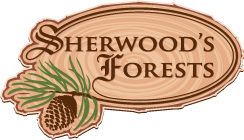Inventory tables are double rows to make them usable on small screens.
Common name and container in column 1.
Count is how many we think we have left. Price is per tree.
Height will be there next year, we hope.
Leaf -- Buckeye
| Common Name Container |
Count Price |
Height (feet) |
|
| Buckeye, Ohio #10 Std pot (30 qt) |
8 $160.00 |
||
| Buckeye, Ohio #15 Std pot (45 qt) |
-1 $160.00 |
||
| Buckeye, Ohio 2.75 in. Caliper Amaroo Tree Box (100 liter) |
1 $300.00 |
||
| Buckeye, Ohio Bare Root Seedling #2 |
70 $4.50 |
||
| Last Update: 2024-Jan-21 | |||
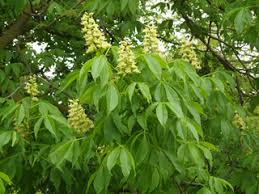
The tree blooms prolifically and is a good pollen and nectar source for bees. Flower panacles are 4 to 7 inches long. Individual flowers are about 3/4" long.
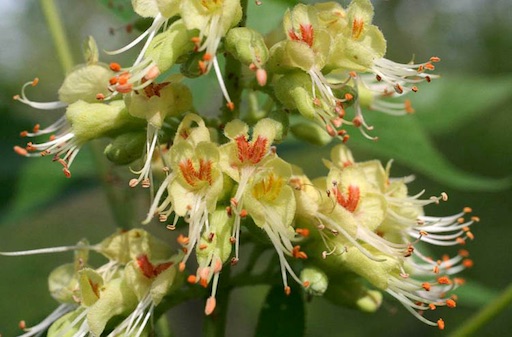
At close quarters the flower is quite attractive.
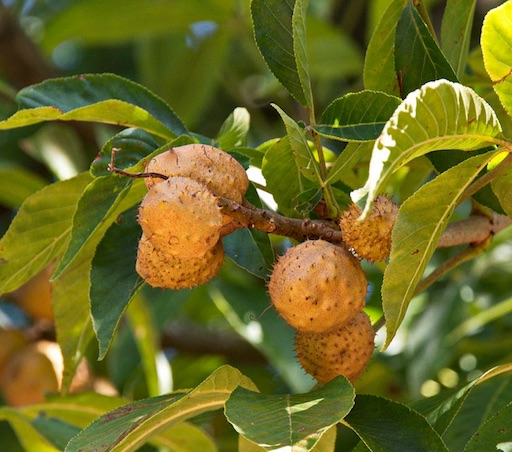
These are the fruit -- conkers.
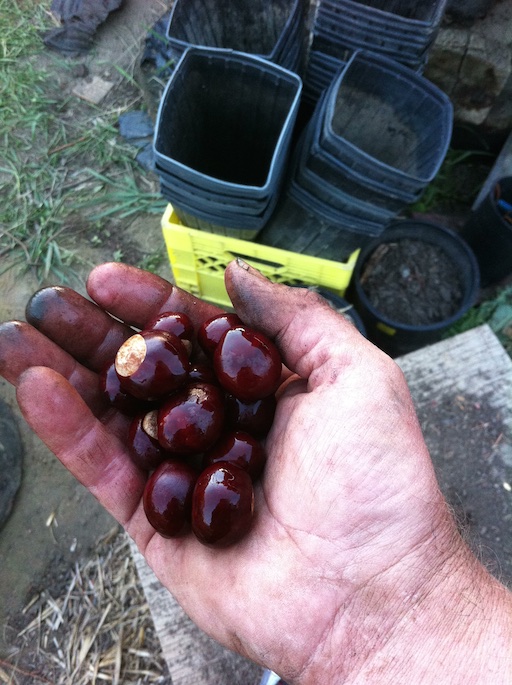
These are the nuts. You can see why they can be confused with sweet chestnuts. If you are working with just the nuts, the edible sweet chestnut has a point. The horse chestnut/buckeye is rounded.
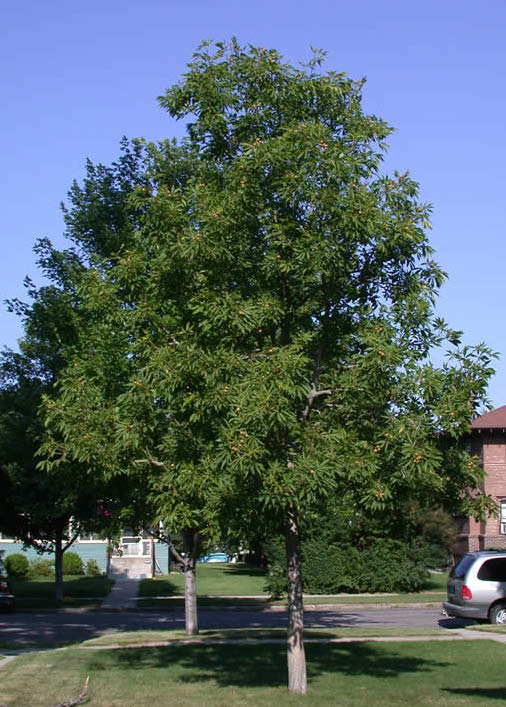
Gives you an idea of what they will look like as they grow.

When the leaves are young, they are deep red. They will turn green later as they fillout. Buckeye is an early tree to leaf out in spring.
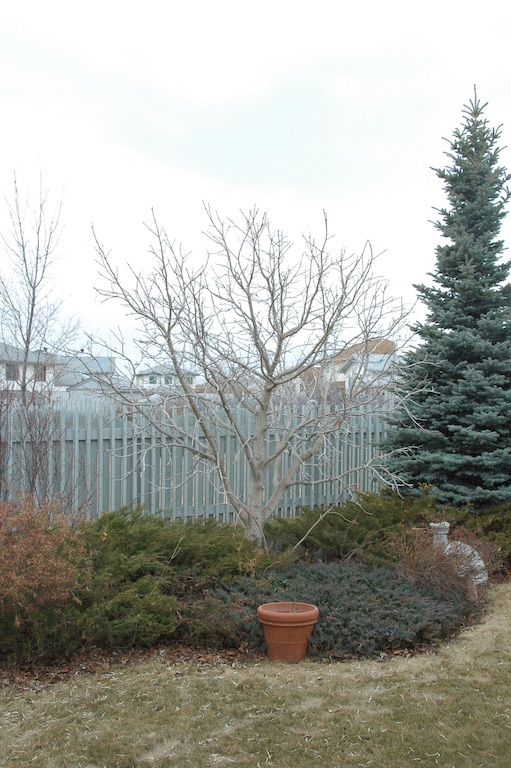
Here's a winter look showing the branch structure.
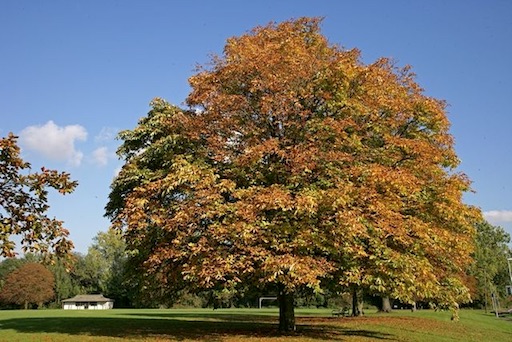
Horsechestnuts are european in origin. As you can see from this picture they get quite large. Probably not something you want in your yard.
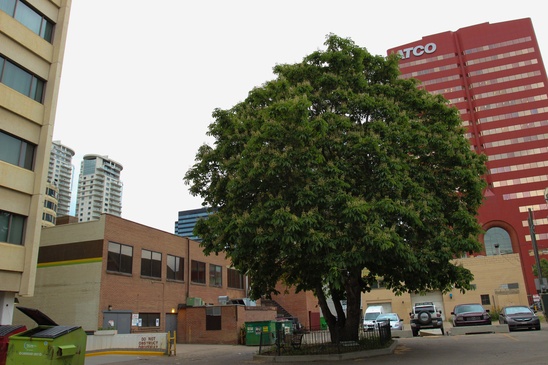
This is the Halowach Tree, right here in Edmonton. This is the only large horse chestnut tree I know of in Edmonton. Many seeds from this tree have been planted, but the success rate is small. Maybe, when we are a zone warmer....
More info and pics o this tree -- including one in full bloom here: Holowach tree
Buckeyes & Horsechestnuts
Aesculus spp
There are various menbers of this family called 'buckeyes'. As far as I know the only one that is truly hardy here is the Ohio Buckeye, or is a A. glabra hybrid. It's a medium size slow growing tree.
Leaves are palmate (like a hand) with several large leaflets connecting at a central point. The whole leaf is often about dinner plate sized.
Fruit is a 'conker' a yellow warty thing with up to 5 nuts inside. Small boys love throwing the conkers at each other.
Growth rate is slow, about a foot a year.
The nut itself is poisonous.
These two trees are similar enough, that when young one can be easily confused. Two key differences:
Horse chestnut gets larger. And it's not as cold hardy. Horsechestnut is mentioned as I expect it become more used as our climate warms.
Care
Soil: Rich, deep fertile, well drained. If you are planting in low lying areas, bring in a dump truck load of top soil, and plant the tree on a pitchers mound. Soil pH of 6.5 to 7.5 (Prairie soils are typically 7.2)
Sun: Does best in partial shade. Leaves will scorch in hot summer wind. This doesn't harm them, but will look bad.
Cultivars
I can usually get buckye in two forms:
*Seed Run ohio buckeye * these are grown from the nuts. They produce pink to orange red fall foliage.
Autumn Splendor Aesculus x arnoldiana 'Autumn Splendor' This is a hybrid between A. flava (yellow buckeye), A. pavia (red buckeye) and A x glabra. This hybrid came out of the University of Minnesota. In the fall is goes red, bright scarlet by one source, maroon according to another. It is smaller than the species buckeye getting only about 30 feet. More scorch resistant than Ohio Buckeye.
This cultivar is usually grafted onto the common Ohio buckeye.
Both of these are hardy to zone 2.
Caution: Poison.
Buckeyes and sweet chestnuts
Despite a similarity in appearance of the nuts, buckeyes are not edible by people. The nuts contain aescin, a glycosidic saponin. Symptoms include Depression, twitching, inflammation of the mucous membranes, vomiting, diarrhea, hyper excitability, dilated pupils, loss of coordination, coma. Young puppies and toddlers are most at risk. More mature animals and kids will stop eating quickly due to the bitter taste. Few will eat a lethal dose, but mild symptoms include severe gastroenteritis with vomiting, and diarrhea. Induce vomiting to reduce further absorbtion. Stomach pump and lavage may be in order.
For cattle, severe poisoning occurs at about .5% of body weight of mashed nuts. For a 150 pound human this would translate to about 3/4 pound of nuts. About a cup and a half.
Leaves are toxic to horses. Poisoning initially presents as colic. Horses can't vomit, so they need their stomach pumped.
Squirrels tolerate it the poison in the nuts.
Nuts may present choking hazards to little people.
Honeybees
I found one report that buckeye flowers were poisonous to honeybees -- last thing we need right now. More investigation (Search buckeye poisonous bees) found that only the california buckeye (Aesculus californica) is a problem for honey bees, but not local native bees. Reports on beekeeper forums where ohio buckeye, red buckeye, yellow buckeye and european horsechestnut are common, report no problem.
If you want to use the nuts https://youtu.be/-kQ9sA5ONxA had details how to process the nuts for eating. Shatter the nut. Boil for about 20 minutes. Mash the nuts to make them much like mashed potatoes. Add water to make a thin gruel, separate the skins and discard. At this point you can mash any lumps. Filter to separate water. Add more warm water, stir, soak, filter. Taste. If still bitter, continue washing. The resulting mush is bland, but is about 80% carbs, 5% protein.
Aescin and it's related chemicals can be used medicinally for treating varicose veins, hemorrhoids, and phlebitis. It's also a blood thinner. It interacts with lithium, some diabetes drugs, other blood thinners. Normal dosing is 50 mg aescin. In short: be cautions and do your homework.
Got something to say? Email me: sfinfo@sherwoods-forests.com
Interesting? Share this page.
Want to talk right now? Call me: (8 am to 8 pm only, please) 1-780-848-2548
Do not arrive unannounced. Phone for an appointment. Why? See Contact & Hours That same page gives our hours of operation.
Back to Top
Copyright © 2008 - 2021 S. G. Botsford
Sherwood's Forests is located about 75 km southwest of Edmonton, Alberta. Please refer to the map on our Contact page for directions.
